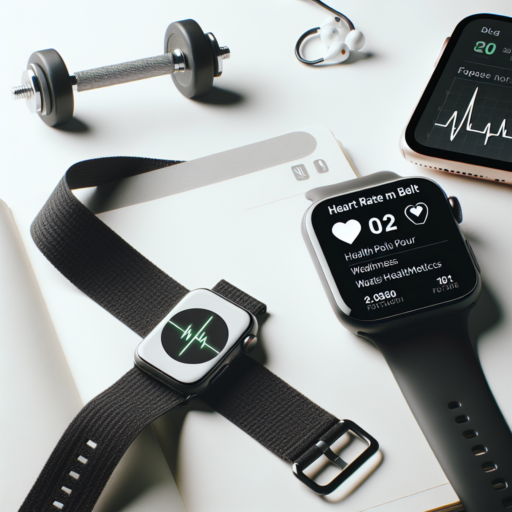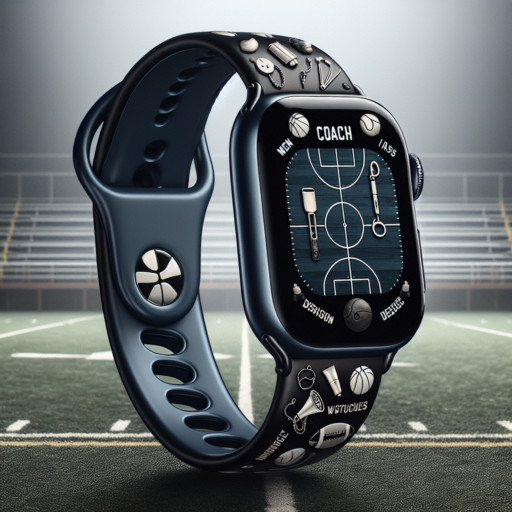Can you get a heart rate strap for Apple Watch?
The short answer is yes, you can pair an external heart rate strap with your Apple Watch for more accurate heart rate data. While the Apple Watch is renowned for its sophisticated health and fitness tracking features, including a built-in heart rate monitor, some users seek even more precision. This is where an external heart rate strap comes into play.
External heart rate straps, often favored by athletes and fitness enthusiasts, can provide more detailed and accurate heart rate data by being worn around the chest. These devices work by detecting the electrical signals of your heart beat, a method that can offer quicker and more precise readings than the optical sensor technology used by the Apple Watch. Once paired with your Apple Watch, the data from the heart rate strap can seamlessly integrate with the Health app, offering a comprehensive view of your workout metrics.
How to pair a heart rate strap with your Apple Watch
To connect a heart rate strap to your Apple Watch, you’ll first need to ensure that the strap is compatible with your device. Most heart rate straps that utilize Bluetooth Low Energy (BLE) technology should work. To pair the devices, simply put on your heart rate strap, go to the «Bluetooth» settings on your Apple Watch, find the strap under «Health Devices,» and select it to pair. Once connected, your Apple Watch will prioritize the heart rate data from the strap over its own sensor during workouts, providing you with the enhanced accuracy you desire.
How accurate are heart rate belts?
The accuracy of heart rate belts has been a topic of considerable interest among both fitness professionals and enthusiasts. These devices, designed to be worn around the chest, measure heart rate by detecting electrical signals each time the heart beats. Generally, heart rate belts are known for their high level of accuracy, especially when compared to wrist-based heart rate monitors. This precision can be attributed to the proximity of the belt to the heart, allowing for a more direct measurement of cardiac activity.
However, the accuracy of heart rate belts can vary depending on several factors. One key element is the fit and placement of the belt. For optimal performance, the belt must be snug against the body, positioned just below the chest muscles. A loose or improperly positioned belt may lead to erratic or inaccurate readings. Additionally, the presence of sweat and movement during intense physical activity can sometimes interfere with signal detection, although modern belts are designed to mitigate these issues as much as possible.
Many manufacturers of heart rate belts have incorporated advanced technology to enhance accuracy. Features like electrode sensitivity improvement and the inclusion of algorithms to filter out noise from movement have made today’s heart rate belts more reliable than ever. Yet, despite these advancements, it’s important for users to regularly maintain their belts, ensuring that the sensor areas are clean and the device’s firmware is updated, to maintain the highest level of accuracy.
Does the Garmin heart rate strap work with the Apple Watch?
Many fitness enthusiasts often wonder if the Garmin heart rate strap, known for its precision in monitoring heart rate metrics, can seamlessly integrate with the Apple Watch. This question arises as users look to combine the advanced heart rate tracking capabilities of Garmin with the comprehensive health and fitness features of the Apple Watch.
The compatibility between Garmin heart rate straps and the Apple Watch hinges on the connectivity technology employed by Garmin devices. Most Garmin heart rate monitors use ANT+ technology to communicate with other devices. However, the Apple Watch does not natively support ANT+ connectivity, instead relying on Bluetooth for wireless communication. This fundamental difference in communication protocols may pose a challenge for direct integration.
Despite these challenges, there are workarounds that enable the use of a Garmin heart rate strap with an Apple Watch. Users can leverage third-party apps that facilitate the translation of ANT+ signals into Bluetooth ones, making it possible to pair the Garmin heart rate strap with the Apple Watch. This workaround, while not straightforward, opens up the possibility for users to enjoy the best of both worlds – Garmin’s accurate heart rate monitoring and the versatile features of the Apple Watch.
Can my Apple Watch track my heart rate?
Yes, your Apple Watch is designed to be a comprehensive tool for health and fitness tracking, including the ability to monitor your heart rate. This feature allows users to keep an eye on their heartbeats per minute (bpm) in real-time, providing valuable insights into their overall cardiovascular health. Whether you’re working out, resting, or going about your daily activities, the Apple Watch utilizes sophisticated sensors to deliver accurate heart rate data.
How Does the Apple Watch Track Heart Rate?
The heart rate monitoring feature on the Apple Watch employs green LED lights paired with light-sensitive photodiodes to detect the amount of blood flowing through your wrist at any given moment. This technology, known as photoplethysmography, is not only utilized during exercise but also periodically throughout the day and night to offer a comprehensive view of your heart rate variability and trends over time. This continual monitoring can be particularly helpful for detecting any unusual patterns that might warrant further investigation.
In addition to its standard monitoring, the Apple Watch includes features designed for workout sessions. When you start a workout via the Workout app, the watch automatically increases the frequency of heart rate measurements to provide a more granular view of your exertion levels, calories burned, and overall workout intensity. Furthermore, with the introduction of the High Heart Rate Notification feature, users can configure alerts for when their heart rate exceeds a certain threshold, highlighting the watch’s capability as a guardian of your health.
It’s worth noting that while the Apple Watch’s heart rate monitoring capabilities are impressive, they are not intended as a substitute for professional medical equipment. However, the data collected can be incredibly useful for personal health tracking and can be shared with healthcare professionals to contribute to discussions about your health and wellness. The ease of access to historical heart rate data directly from the Health app on your iPhone also enhances the ability to track changes and patterns over time.










